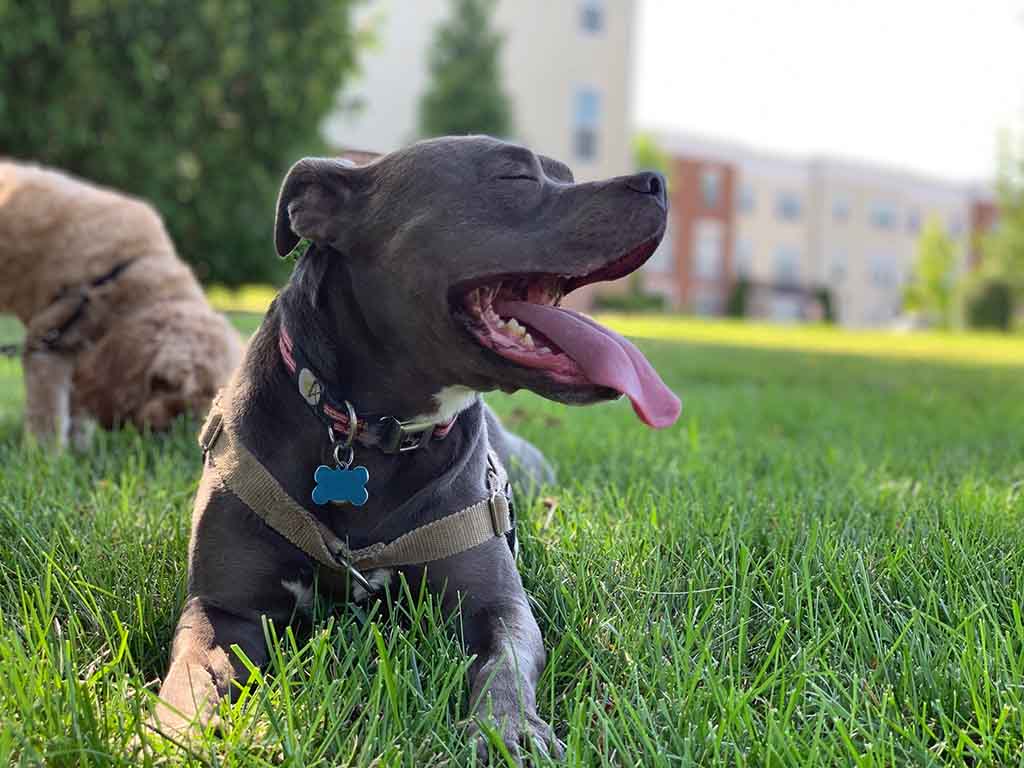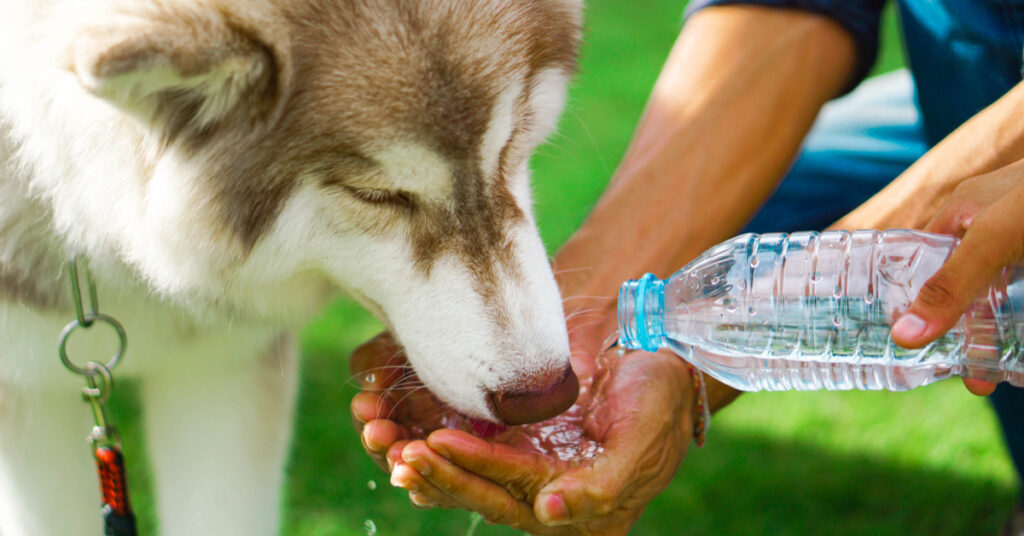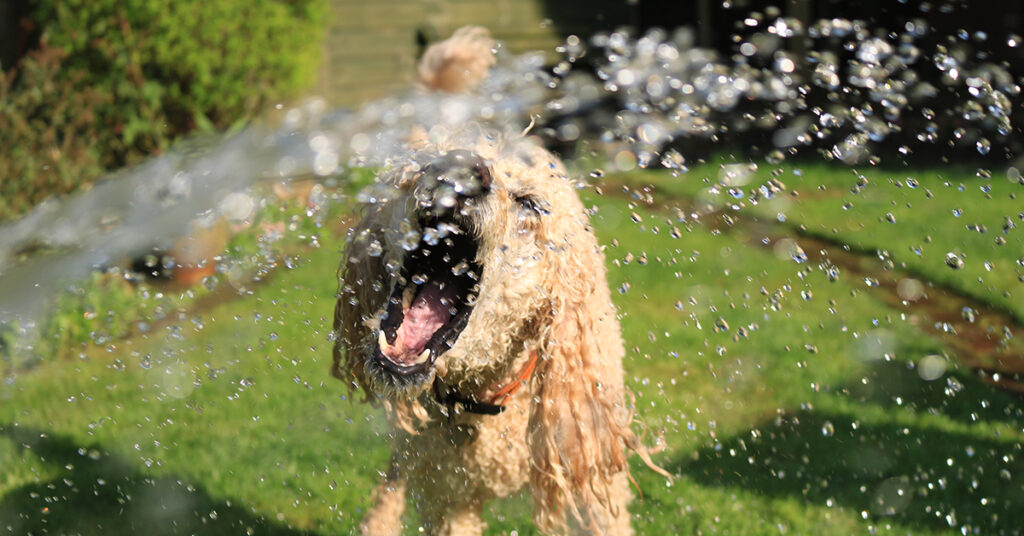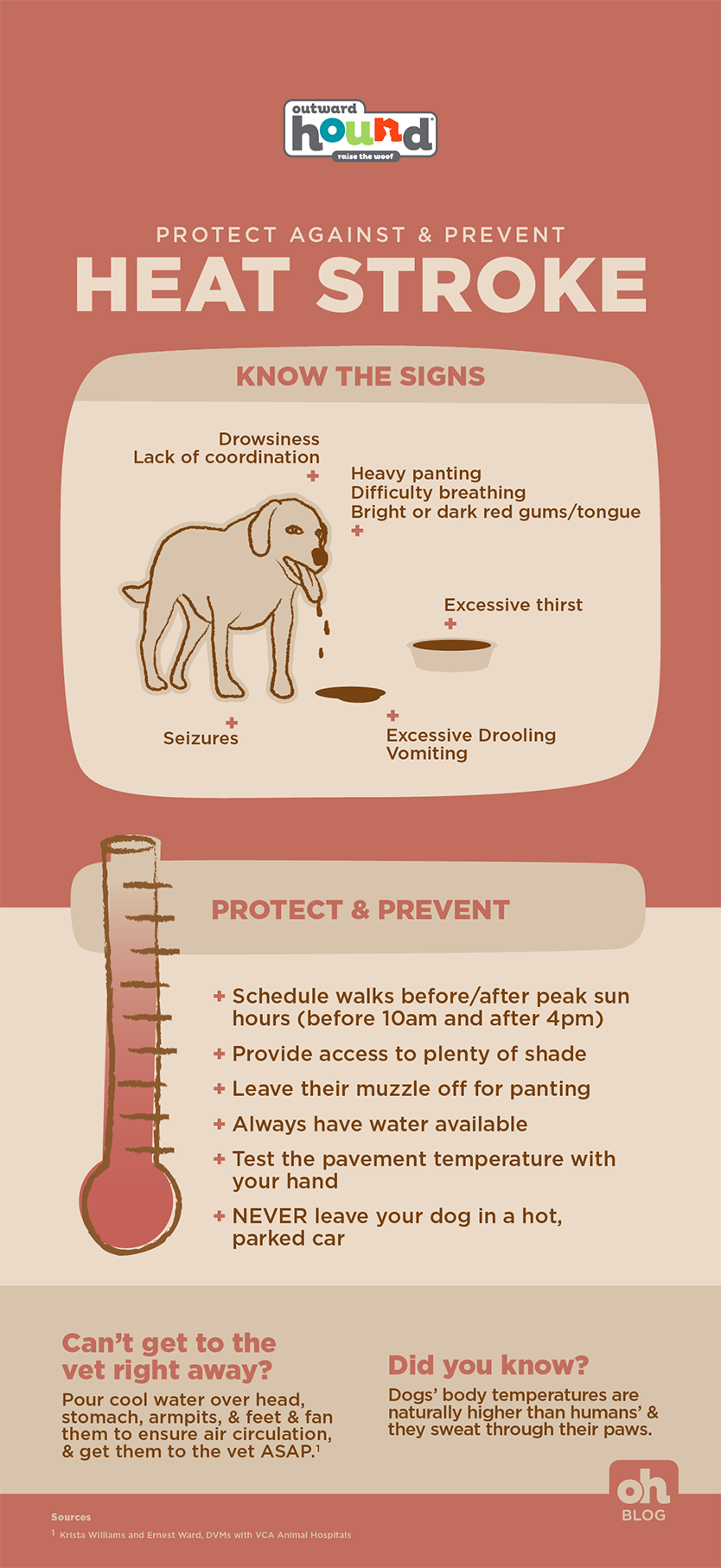The season of warm weather is upon us. In some parts of the country, hot weather turns into hotter weather, which turns into positively sweltering, insufferable heat. While you might be able to withstand it for several minutes, do you know how hot is too hot for dogs?
Heat stroke, also known as hyperthermia, can occur in any hot environment. This ranges from irresponsible dog owners leaving their dogs in hot cars, to not supplying enough drinking water or shade for their dog when outdoors in the summer heat.
Dog body temperatures are naturally higher than humans’. Keep your dog cool and avoid heatstroke by knowing how to identify it and how to prevent it.
What are the warning signs of heat stroke?

If you live in an area that experiences hot and/or humid summers, you need to recognize when your pup is struggling from heat exhaustion.
Common causes of heatstroke come from exposure to high temperatures combined with high humidity, or from doing strenuous physical activity in these conditions.
Signs of heat stroke in dogs include:
- Heavy panting
- Difficulty breathing
- Bright or dark red gums & tongue
- Excessive thirst
- Excessive drooling
- Lethargy
- Muscle tremors
- Lack of coordination
- Seizures
- Vomiting
- Dog’s body temperature rises >104
Dogs with life-threatening heat-related illnesses could get organ failure. Pet owners should always have cool water available for their pups, especially on a hot day.
Some dog breeds are more prone to overheating than others, like dogs with extra fluffy fur coats (i.e., huskies and malamutes). Wrinkly dogs with brachycephalic airway syndrome (dogs with squished snouts like pugs and bulldogs) are at even higher risk.
What do I do if my dog gets a heat stroke?

If your dog shows the aforementioned symptoms of heat stroke, take them to the vet as soon as possible. They will treat your dog with intravenous fluid therapy to replace fluids and minerals and monitor them for any other signs of damage.
If you can’t get your pup to the vet right away, Krista Williams and Ernest Ward, DVMs with VCA Animal Hospitals, recommend using a cool cloth/wet towel or pouring cool water (not cold) over the head, stomach, armpits, and feet. Fan them to ensure air circulation, and get them to the veterinary hospital ASAP.
How to protect your pet when it’s hot out

There are many ways you can protect your pet and provide them with fun outdoor time in the summer months. You just need to take the right precautions when the temperatures are high.
- If your pet must be outdoors, provide access to plenty of water and shaded areas. Add ice cubes so the water stays cold for longer, and give them the option to go back inside where there’s air conditioning.
- On extra-hot or humid days, schedule your walks in the early morning before the sun has come all the way up. Wait for the sun to set for evening walks when the outside temperature drops. The hours between 10 a.m.-4 p.m. are going to be the hottest.
- Note: Don’t force your dog walker to take your dog for regular-length walks during the hotter hours. Instead, ask them to take them out just to do their business, then go inside for some playtime.
- Do not EVER leave your dog in a hot, parked car. There are 31 states that have some sort of “hot car” law protecting dogs locked in cars. Some of them will grant civic immunity to people who break in to rescue a distressed animal from a vehicle.
- Test the ground temperature by placing your hand on the ground. If it’s too hot for you, it’s likely too hot for your dog’s paw pads.
- Carry extra water for you and your dog during long hikes or walks in warm temperatures.
- If your dog typically wears a muzzle, leave it off. Muzzles restrict their ability to pant. Dogs need to pant in order to keep cool.
How to cool down a dog

- If you have the outdoor space, you can keep your dogs cool by getting an inexpensive kiddie pool for them to dip their paws in on a hot summer day with high temperatures. Dogs sweat through their paws, so just standing in cool water can help regulate their body temperature.
- Instead of laying on hot pavement, get your dog a cooling mat or elevated dog bed to rest on next to a fresh water bowl.
- You can also have them wear a bandana over their chest that is soaked in cold water to keep them from overheating. Some come with pockets to place ice packs in.
- Pet parents can make DIY frozen treats like these.
- Get your hot dog a cooling vest.
And if your pooch loves to play in the water, he’s going to LOVE having his very own kiddie pool or sprinkler during a heatwave. You can also have them wear a bandana over their chest that is soaked in cold water to keep them from overheating.
Water activities are one of the best ways to keep your dog cool in the summertime. If you go boating, to the beach, to the pool, or to a lake, don’t forget to practice basic water safety and consider having your dog wear a life vest for flotation.
Keep Your Dog Safe

Please don’t leave your dog outside in extreme heat. Even if your dog lives for sunbathing and doesn’t know his limits, make them take a shade break every once in a while. And again, always have water available to avoid dehydration.
Heat stroke can quickly lead to death if not prevented or taken care of promptly.
Tip: Don’t forget sunscreen! Yes, dogs can get sunburn. Even when they’re not an overheated dog.
How do you summer safely with your pet?

